- RAID
- 25 March 2022 at 19:54 UTC
-

While it's fairly straightforward to switch from RAID mode to HBA mode for a specific connector (by simply removing the RAID arrays affected by that connector), it's not as straightforward to do it the other way around (from HBA to RAID).
Indeed, a restart will be necessary and your computer may have a strange behavior temporarily as you will see in this tutorial.
- Hard drives in HBA mode
- Impossible to change mode from HBA to RAID via maxView
- Change the functional mode of a port via ACU
- Create a RAID volume
- Strange behaviour
- Partitioning the logical drive in RAID mode
1. Hard drives in HBA mode
Currently, the CN4 connector of our Adaptec SmartRAID 3154-8i8e controller is configured in HBA mode.
This allows Windows to directly recognize the physical hard drives plugged into this connector rather than a logical RAID volume.
Note that in our case, we had created a partition on the entire SAS hard drive connected to our Adaptec SmartRAID 3154-8i8e controller (as you can see below).
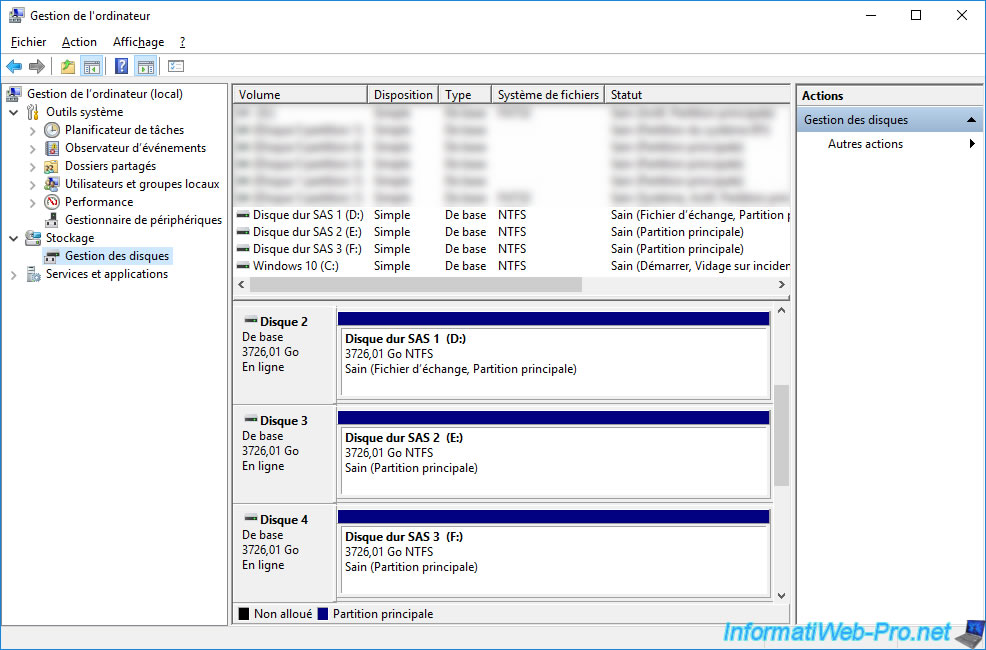
2. Impossible to change mode from HBA to RAID via maxView
To avoid restarting your computer / server and to avoid interrupting any services that may be running on it, you will probably want to change the desired connector mode via maxView.
Except that you will quickly see that this is not possible.
Select the desired connector (in our case : CN4) in the maxView web interface and you will see that its operating mode (Functional Mode) is : HBA.
Click on the 1st icon of the "Controller" block located at the top of the page.
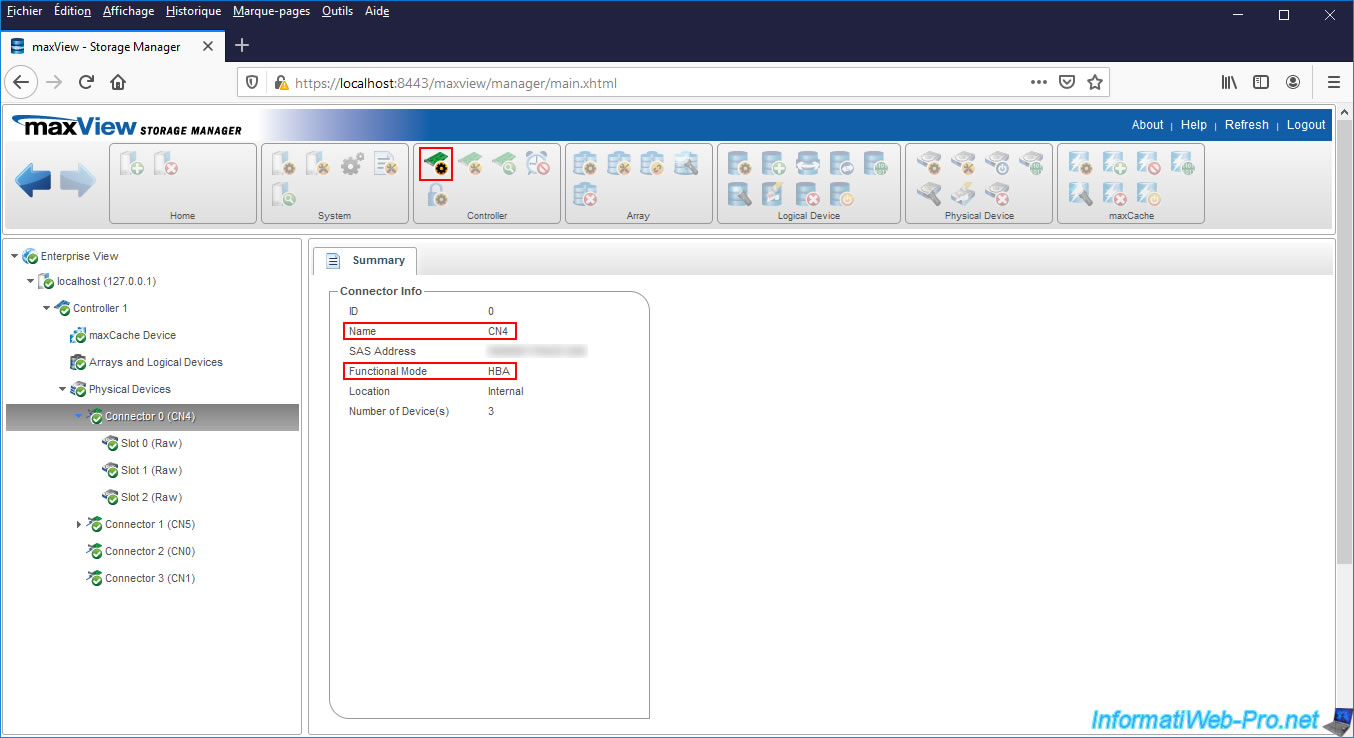
As you can see, you can only select "HBA" or "Mixed" (= HBA and RAID on the same connector).
However, Mixed will not allow you to recover hard disks already configured in HBA mode to create a RAID array.
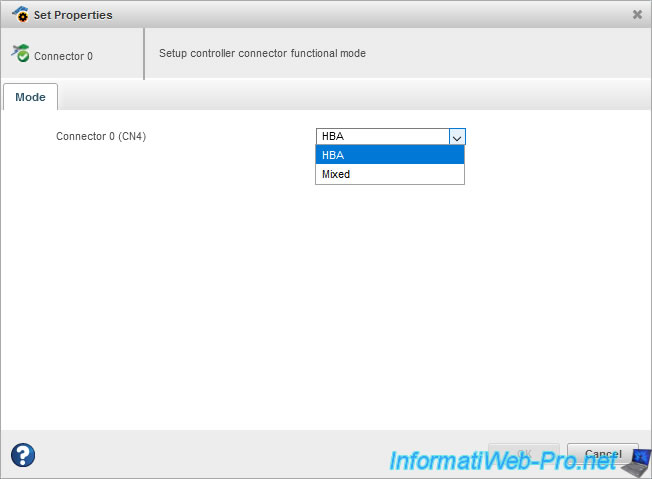
To change the functional mode, you can also go through the controller properties.
To do this, select your controller on the left and click on the 1st icon of the "Controller" block at the top of the page.
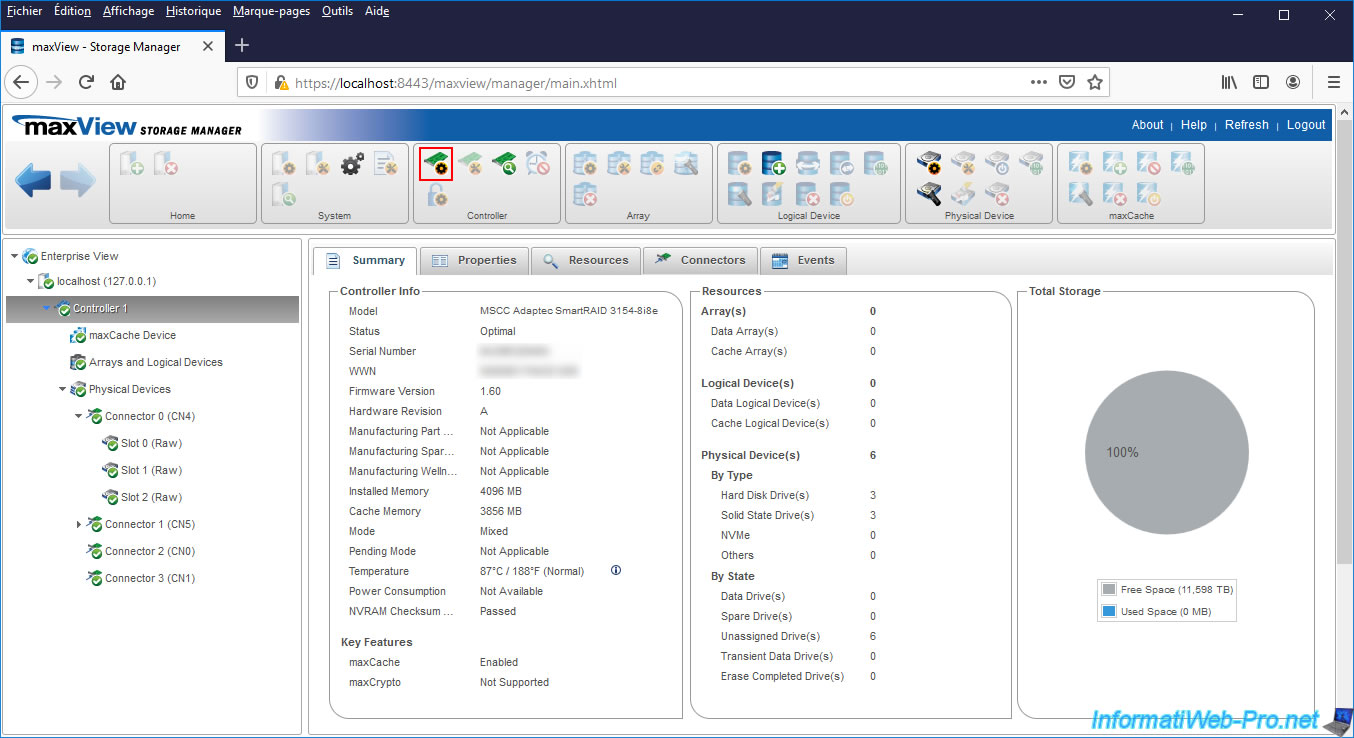
Again, for the desired port, you will only have the choice between "HBA" and "Mixed".
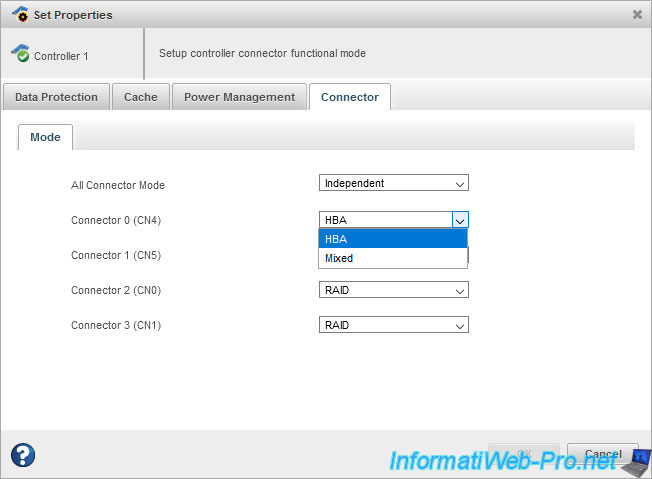
If you select one of the physical disks, you will see that it's configured in HBA mode.
Click on the 1st icon of the "Physical Device" block at the top of the page.
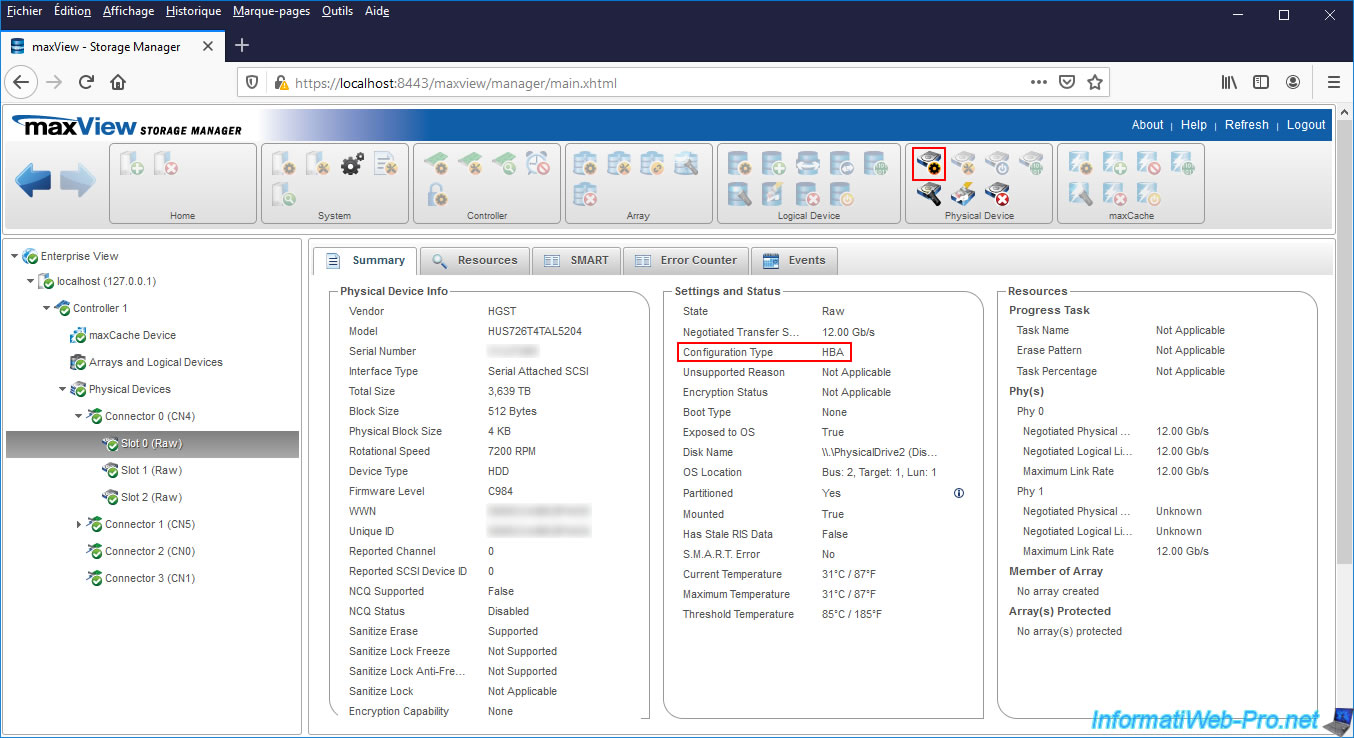
But, you will not find any option to recover it to use it in RAID mode.
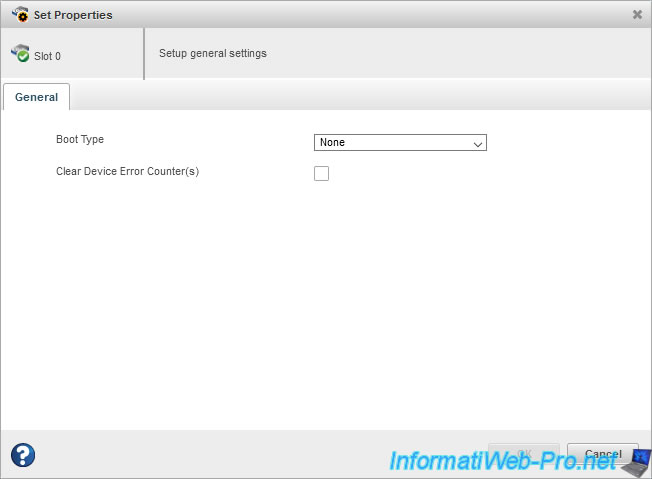
3. Change the functional mode of a port via ACU
As you will have understood, to change the functional mode of a specific port from HBA to RAID, you will have to restart your computer / server and enter the configuration tool (ACU) of your Microsemi Adaptec SmartRAID controller.
As our CN4 port is configured for the moment in HBA mode, our controller shows us lines "Dev#x - Single 3.63TiB OK".
Press the "CTRL + A" keys (on a QWERTY keyboard) or "CTRL + Q" (on an AZERTY keyboard).
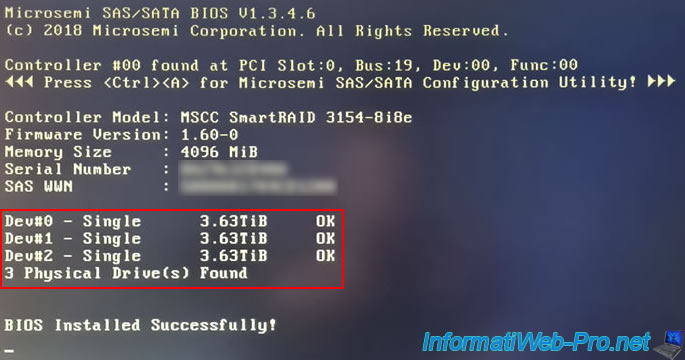
Once in the configuration tool, go to : Configure Controller Settings.
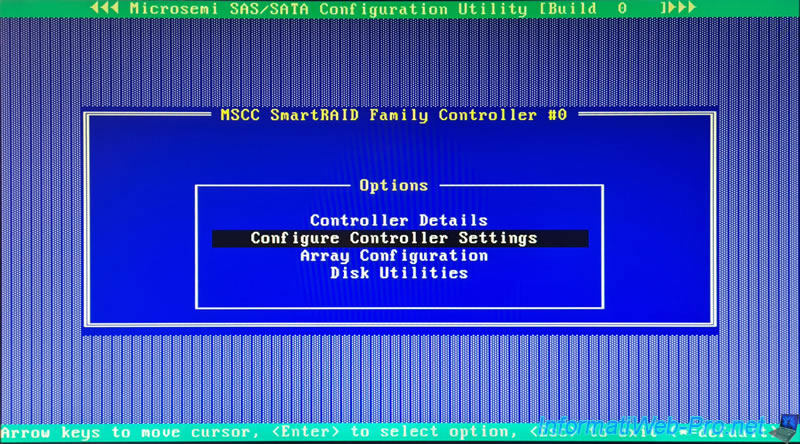
Then, in : Configure Controller Port Mode.
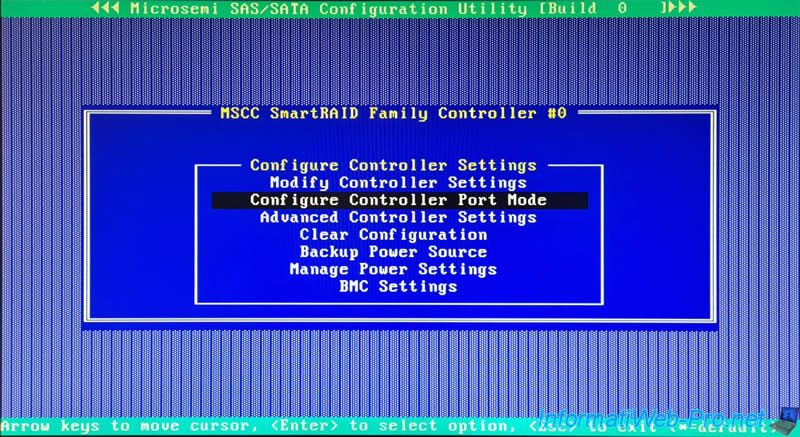
Select the port for which you want to change the functional mode (in our case : Port CN4), then press Enter.
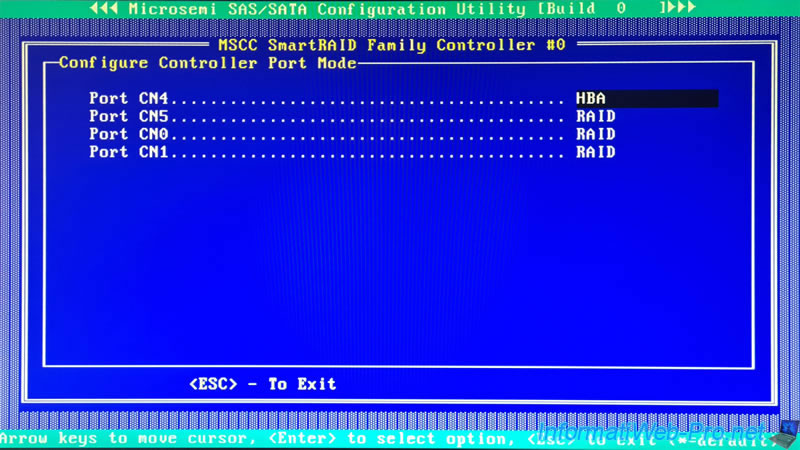
Select : RAID.

The mode changes to RAID.
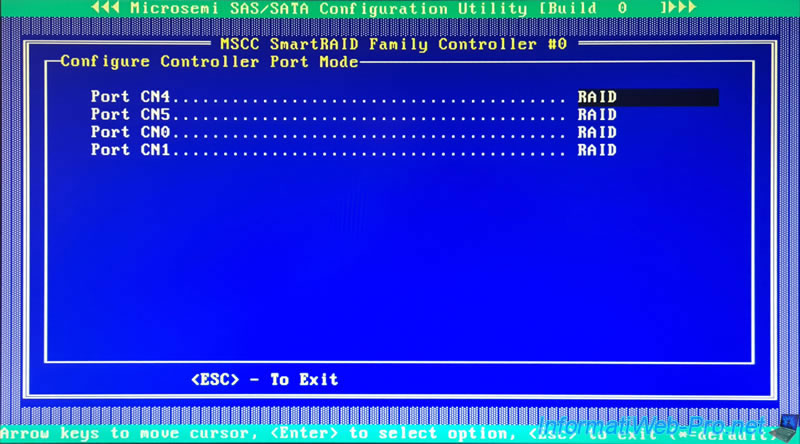
To save this change, press "Esc" and answer "Yes" to the "Save Changes Made?" question which will appear.

If the change is possible in your case, the "Connector Mode change(s) saved successfully" message will appear.
![]()
Press "Esc" several times to exit the configuration tool (ACU) and validate by selecting "Yes".

The "Rebooting the system, Please Wait ..." message appears.
![]()
4. Create a RAID volume
When you restart your computer / server, your controller will no longer display the physical disks (for this connector) and in our case, there are therefore no more physical disks (in HBA mode) or logical disks (in RAID mode).
As a result, the "No Logical Drives Found" and "No Int 13 Drives to support" messages appear.
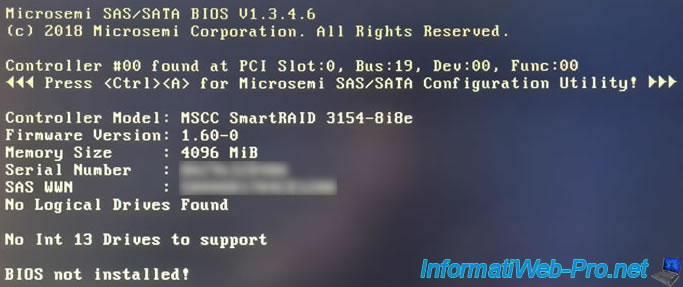
To create your RAID array, enter the configuration tool (ACU) of your controller and then refer to our tutorial : Adaptec SmartRAID 3154-8i8e - Create a RAID volume (from ACU).
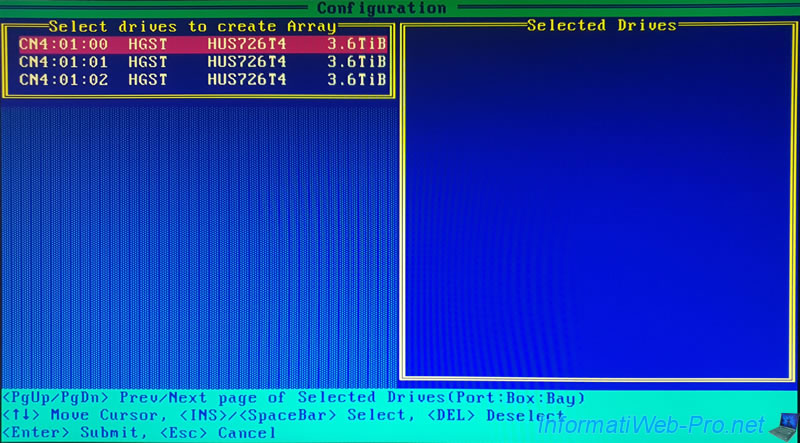
5. Strange behaviour
If you had stored data on physical hard drives configured in HBA mode in your Microsemi Adaptec SmartRAID controller, unreadable data might end up in the RAID volume.
Which in our case caused an error when starting our computer.
Indeed, at startup, our BIOS showed us this error :
Plain Text
GPT header corruption has been detected, please check SATA mode setting in BIOS Setup, or you can use [Boot Sector (MBR/GPT) Recovery Policy] item under [Boot Configuration] page to recovery GPT header. Press F1 to Run SETUP.
In this case, press the indicated key (in our case : F1) and configure the BIOS of your motherboard to start on the device where your installation of Windows is located (or any other operating system installed in your case).

In our case, if we look in the Boot Menu of our BIOS, we see that it detects an UEFI operating system (UEFI OS) on our RAID5 volume.
This is what causes this bug at startup.
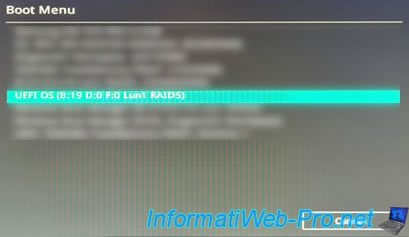
To temporarily ignore the problem, select the device where Windows is installed.
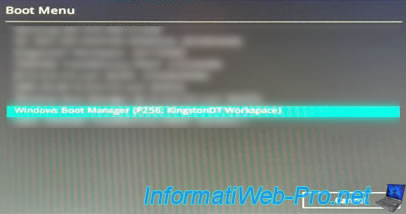
The computer boots to the desired device.

And in our case, we come to our installation of Windows.

6. Partitioning the logical drive in RAID mode
On Windows, right click "Manage" on "This PC" (or "Computer") and click "Disk Management".
As you can see, in our case, Windows detects a partition in RAW format (= unknown or corrupted file system) with a size of 3726.01 GB.
You will therefore easily understand that this is a rest of the partition created on our 1st SAS hard drive which was in HBA mode at the start of the tutorial.
Since we didn't erase the physical disk (from maxView for example) before creating our RAID array, there is therefore data that can be detected randomly by Windows (or any other operating system compatible with your Microsemi Adaptec SmartRAID controller).
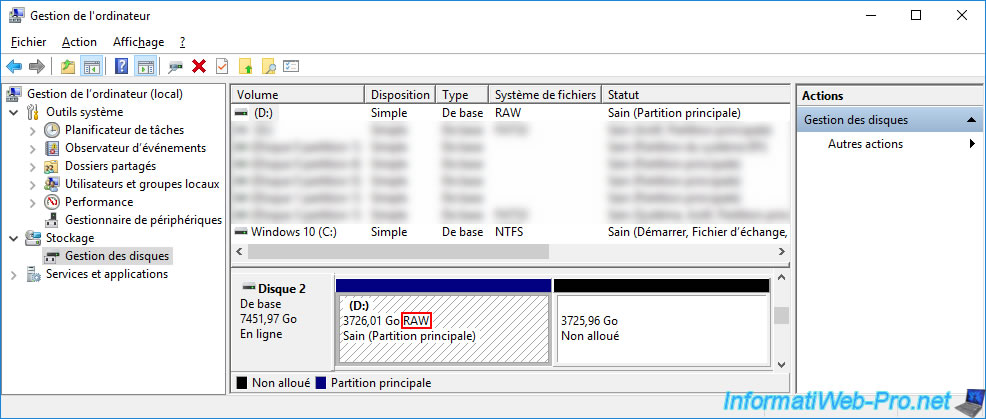
To solve the problem in our case, we deleted this partition (simple volume).
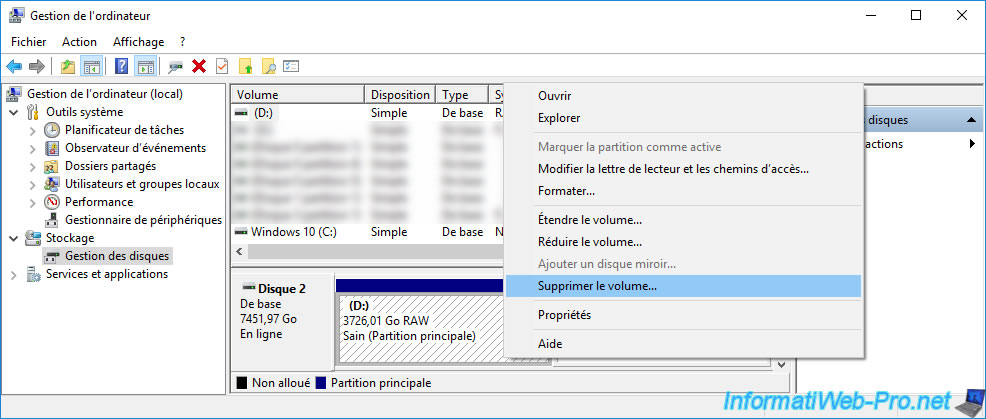
Confirm the deletion of the simple volume.

Now, there is only one unallocated space left.
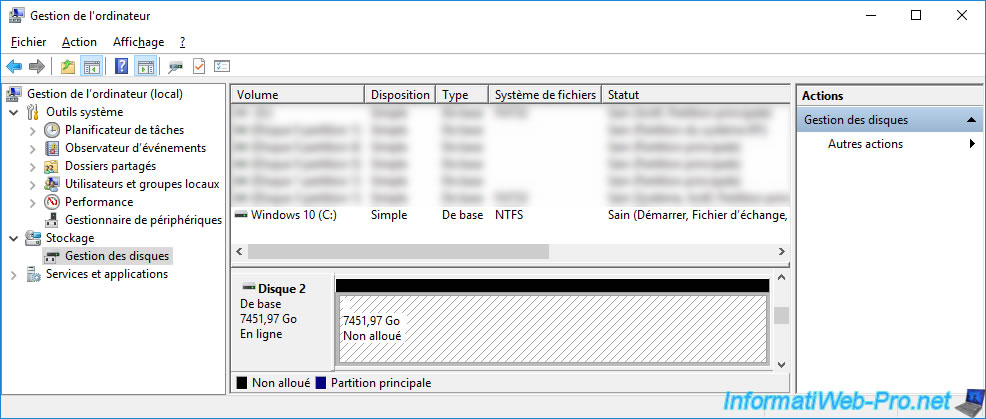
Create a simple volume on it.
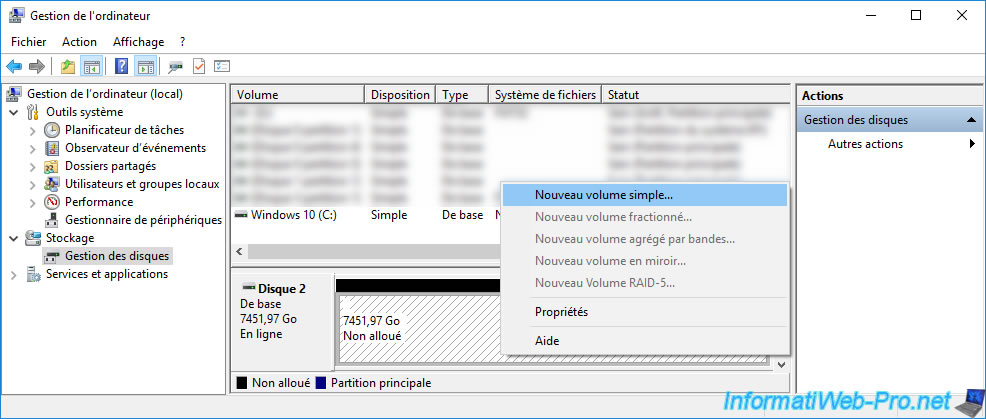
In our case, we named our volume : RAID Vol.
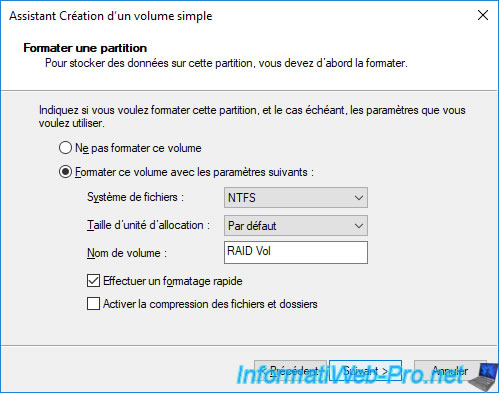
Our partition (simple volume) appears with a "NTFS" file system (in our case).
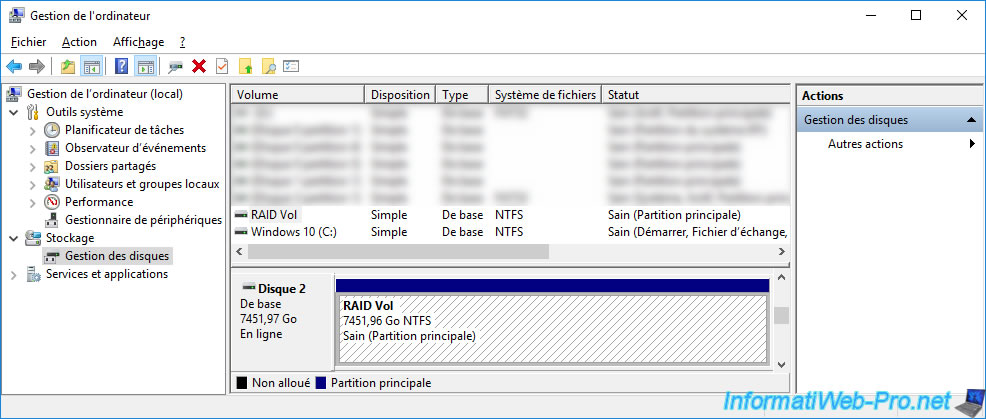
On restart, if you check your motherboard's BIOS (or its boot menu), you will see that the "UEFI OS" option (in our case) is no longer displayed.
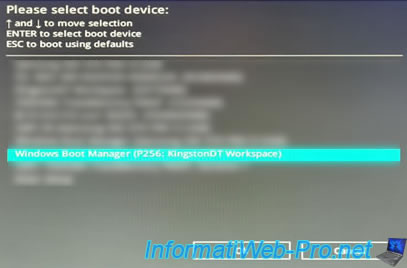
Share this tutorial
To see also
-
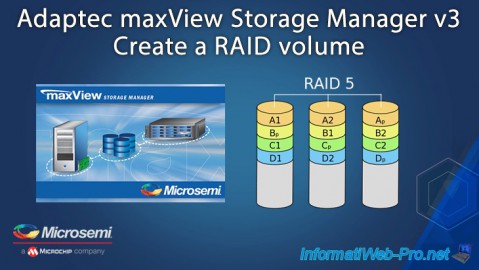
RAID 4/20/2022
Adaptec maxView Storage Manager v3 - Create a RAID volume
-
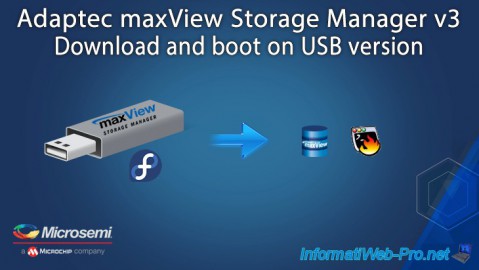
RAID 4/8/2022
Adaptec maxView Storage Manager v3 - Download and boot on USB version
-
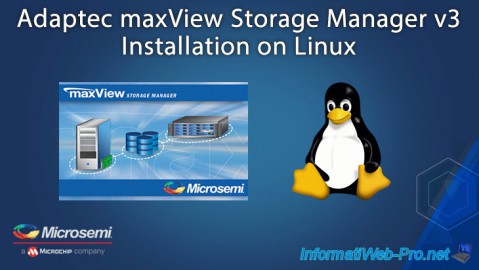
RAID 4/13/2022
Adaptec maxView Storage Manager v3 - Installation on Linux
-
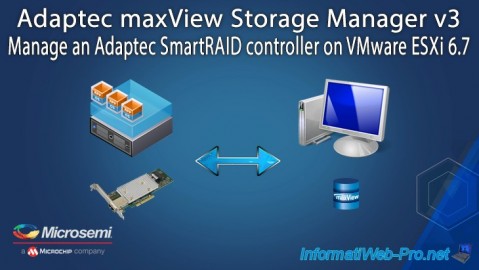
RAID 4/15/2022
Adaptec maxView Storage Manager v3 - Manage an Adaptec SmartRAID controller on VMware ESXi 6.7

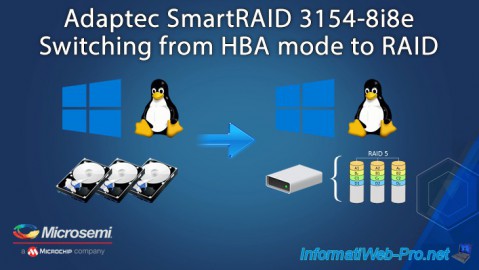
You must be logged in to post a comment